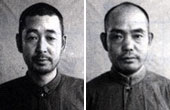Cuba's historic preservation can offer lessons for China
By Chen Weihua (China Daily USA) Updated: 2014-07-21 11:49
Cuba is building the Mariel development zone west of the capital city of Havana. The first such zone in the island nation is also wooing foreign investment from around the world.
Some say this development zone draws its inspiration from the successful special economic zones in China, the first and the best known being Shenzhen. The former fishing village has become one of the largest and most modern cities in the nation.
Chinese have their fingers crossed for the Mariel experiment, part of Cuban's ongoing economic reform. China's experiences in the last 40 years of reform and opening up may offer some helpful lessons for Cuba.
But being in Cuba for the third time, I have a strong feeling that Cuba could offer China a few lessons. I am not talking about the public healthcare system, which Chinese President Xi Jinping visited during his last visit to Cuba in 2011, but the architecture and historic preservation that has been achieved in spite of economic hardship.
If Shanghai's Bund is called a collection of architectural styles from around the world, then Havana, especially its old part known as Habana Vieja, is a living museum of wonderful architectural styles, from baroque and neoclassical to art deco and eclecticism.
 Buildings, tens of thousands of them, often colorful, have been restored to their original glamour since the work started in the 1970s. The work on some is under way while many more have yet to start. For the time being, many Cubans still live in run-down buildings which have great value for preservation.
Buildings, tens of thousands of them, often colorful, have been restored to their original glamour since the work started in the 1970s. The work on some is under way while many more have yet to start. For the time being, many Cubans still live in run-down buildings which have great value for preservation.
In China's case, old hutong, which are unique to the Chinese capital of Beijing, have been largely wiped out. The same tragedy happened to the alleyways in Shanghai known as nongtang.
So if you go to Beijing and Shanghai these days, the few hutong and nongtangs that still exist are mostly for tourism purposes. They are so touristy that you can no longer feel the original flavor. Zhouzhuang, a well-known canal town near Shanghai, is fully occupied by restaurants and gift shops.
In the case of Shanghai, to achieve a rapid change every three years, the city literally demolished its old cities in a way unprecedented in its history. So while the Shanghai's skyline may look modern and even futuristic, much of its history has sadly been decimated with the demolition of old buildings and neighborhoods.
There is no neighborliness in Shanghai and many Chinese cities these days as people have left the places they grew up in and moved to high-rise buildings that insulate people from each other. The most they do is just nod to each other waiting in the same elevator lobby.
Yes. It takes time and it's costly to preserve and restore old buildings. But Cuba, which faces tougher economic challenges than China has in the last few decades, has chosen a path of preserving its history that is laudable and worthy of learning from by the Chinese.
Cuba is not only not repeating China's mistake in preserving history, it has, in my mind, a great vision and has achieved excessively in this regard.
What Chinese should admire about Cuba is the kind of patience massive urban preservation work requires, simply because once great old buildings are knocked down, they're just gone. All the things you rebuild, what people see mushrooming in cities, no matter how magnificent or how much of a mirror image they are of the historical ones, are still just fakes.
When I brought that question of preservation to a Cuban friend in Havana on Sunday, he explained that Cubans put a lot of emphasis on history, one of the proofs being that the country's college entrance exam requires only three courses: math, history and Spanish.
That probably explains why. It should help China to rescue the historical buildings, neighborhoods that still exist but are threatened by greedy developers.










